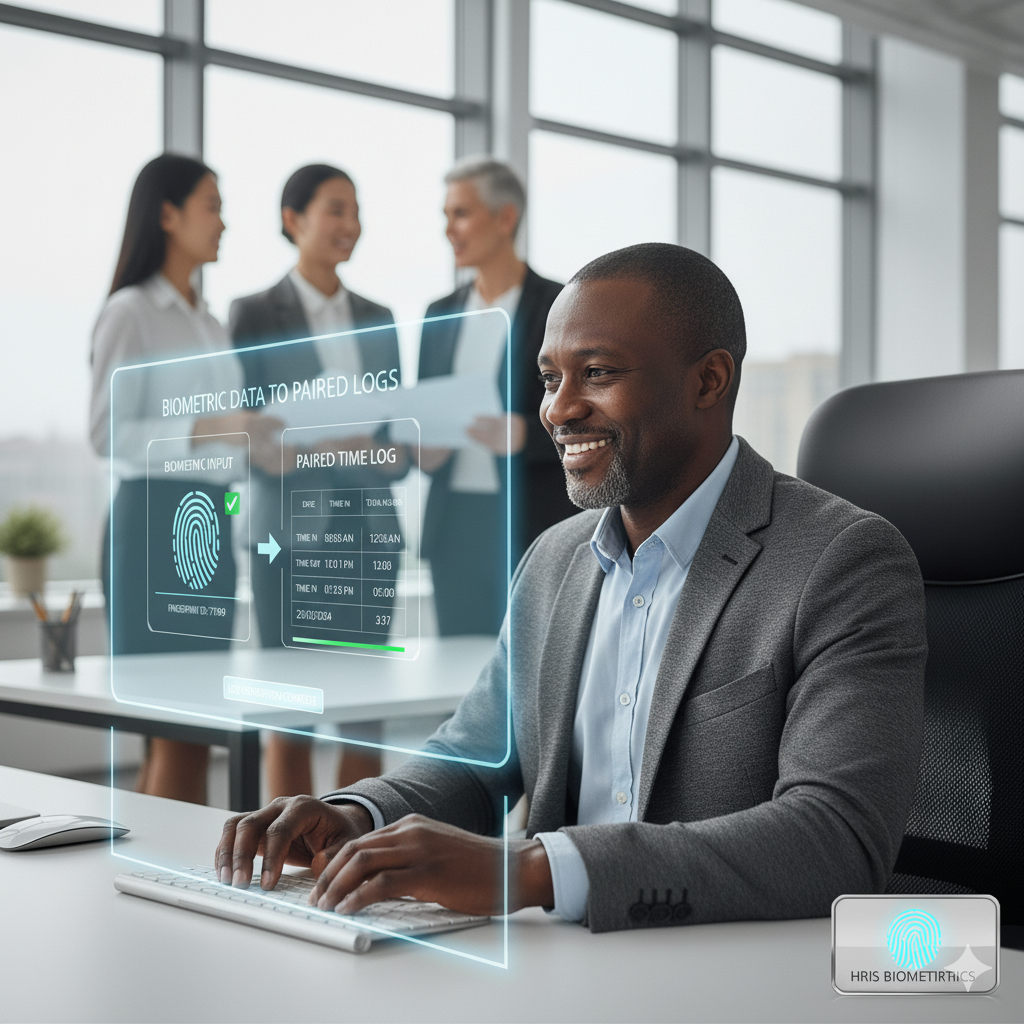Address
Kaypian, San Jose Del Monte City, Bulacan Philippines
Work Hours
Monday to Friday: 8AM - 6PM
Weekend: 10AM - 5PM
Address
Kaypian, San Jose Del Monte City, Bulacan Philippines
Work Hours
Monday to Friday: 8AM - 6PM
Weekend: 10AM - 5PM


Integrated HR. Accurate Payroll.


Integrated HR. Accurate Payroll.

In today’s digital workplace, accuracy and transparency in attendance management are essential for both employees and HR departments. With the increasing use of biometric devices—such as fingerprint scanners and facial recognition systems—companies can capture time logs automatically and precisely.
However, raw biometric data alone isn’t enough. Organizations need a system that can interpret and structure those logs into meaningful attendance records. This is where HRIS self-service tools play a powerful role.
Through automated paired log generation, HRIS systems match biometric entries (IN and OUT) to create accurate and accessible Daily Time Records (DTRs)—available to employees in real time through self-service portals.
Paired logs refer to the matched “IN” and “OUT” time entries that determine an employee’s actual working hours.
For example:
IN: 8:00 AM (biometric scan)
OUT: 5:00 PM (biometric scan)
→ Total hours worked: 9 hours
In a modern HRIS (Human Resource Information System), these logs are automatically paired, calculated, and stored—eliminating manual computation and potential human error.
The Role of Biometric Data in Attendance Tracking
Biometric systems provide real-time, tamper-proof attendance data by identifying employees through unique physical attributes like fingerprints, facial features, or iris scans.
When connected to an HRIS, these devices send raw timestamps to a centralized database. The HRIS then processes and converts them into readable attendance records that form the basis of payroll, overtime, and compliance reporting.
This integration ensures that every second logged is accurate, traceable, and aligned with company policies.
Here’s how the process works step-by-step:
This transparent process helps employees stay informed and accountable, while HR teams enjoy reduced administrative workload.
✅ 1. Increased Accuracy and Reliability
Automated pairing minimizes human errors in attendance tracking. HRIS tools validate data directly from biometric devices, ensuring that logs are always precise and complete.
🕒 2. Real-Time Data Access
Employees no longer have to wait for HR to verify attendance. The self-service portal gives them immediate visibility into their logs, improving transparency and trust.
⚙️ 3. Reduced HR Administrative Tasks
By automating log pairing and verification, HR teams spend less time on manual DTR processing and more time on strategic workforce management.
🔒 4. Secure and Traceable Records
All logs are stored digitally with encryption and audit trails. This enhances data security and ensures compliance with labor and privacy laws.
📈 5. Data-Driven Insights for Management
Paired logs feed directly into analytics dashboards, giving HR and management access to metrics like attendance trends, overtime costs, and workforce punctuality.
To maximize efficiency, your HRIS self-service tool should include:
These features make timekeeping not only efficient but also transparent and employee-friendly.
Imagine an employee forgets to clock out at the end of the day. Instead of HR manually correcting the record, the self-service inquiry feature allows the employee to request a correction through the HRIS portal. The system automatically verifies supporting data, and once approved, updates the paired log — seamlessly, securely, and transparently.
As HR technology advances, HRIS platforms are integrating AI and machine learning to further refine paired log generation.
Future systems may:
This evolution marks a shift from reactive to proactive attendance management, empowering HR departments to focus on engagement rather than error correction.
The ability of HRIS self-service tools to generate paired logs from biometric data represents a major leap forward in attendance accuracy, transparency, and efficiency.
With this technology, organizations can:
✅ Eliminate manual errors
✅ Empower employees with real-time data
✅ Ensure compliance and security
✅ Streamline payroll and HR operations
In the era of digital transformation, adopting HRIS systems with automated paired log generation is no longer optional — it’s a strategic advantage.
By merging biometric precision with self-service convenience, businesses can build a more transparent, efficient, and accountable workforce.